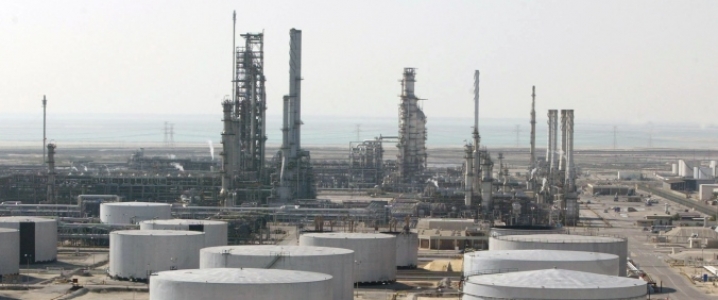Saudi Arabia’s oil production has been at a record high this month—at between 11.1 million bpd and 11.3 million bpd in some days in November, an industry source familiar with the output told Reuters on Monday, but whether the Saudis pumped an all-time average monthly high will be known once November ends.
While the Kingdom has been pumping in record amounts, U.S. President Donald Trump had been using Twitter this month first to express hope that Saudi Arabia and OPEC won’t cut production to prop up oil prices, then to thank Saudi Arabia for the lower oil prices, and most recently, to thank himself for the falling oil prices in a tweet on Sunday.
The Saudis, together with the leader of the non-OPEC nations part of the production cut deal—Russia, started to increase oil production in June to offset what the market expected to be a drop-off of Iranian oil supply once the U.S. sanctions return.
Saudi Arabia’s crude oil exports hit their highest in 20 months in September, according to data by the Joint Organisations Data Initiative (JODI) database, which collects self-reported oil figures from 114 countries. The Kingdom’s production in early November appears to have hit the highest on record, on the back of high customer requests made in early October when the market feared a hefty loss of Iranian supply this month, industry executives tracking Saudi output told Bloomberg last week. Related: Legendary Oil Trader Expects Crude Prices To Rebound
Russia’s oil production set a new post-Soviet record high of 11.41 million bpd in October, up from 11.36 million bpd in September.
As U.S. sanctions on Iran returned in early November, with waivers for eight key Iranian oil customers, the market was gripped by fears of oversupply and slowing global economy and oil demand growth, sending oil prices into a bear market.
Oil prices are now more than 25 percent off their four-year high from early October, with WTI Crude holding just above $50 and Brent Crude barely clinging onto $60 early on Monday.
OPEC is widely expected to announce a new production cut at its meeting next week. Yet, the U.S.-Saudi relations—with President Trump standing by Saudi Arabia and Crown Prince Mohammed bin Salman amid the global backlash over the killing of Jamal Khashoggi—may complicate Saudi Arabia’s decision to lead a decisive and sizeable OPEC production cut, according to Saudi watchers quoted by Reuters.
By Tsvetana Paraskova for Oilprice.com
ADVERTISEMENT
More Top Reads From Oilprice.com:
- Could Oil Prices Fall To $40?
- India Looks To Double Its Natural Gas Usage
- Platts Survey: Brent Oil Price To Average $75 Next Year

















The first is that Saudi oil production peaked at 9.6 mbd in 2005 and has been in decline since. Saudi Arabia could only produce a maximum of 9-9.1 mbd. Any volumes above that comes from oil stored on board tankers or on land. Even the 400,000 b/d Saudi Arabia added to the market six weeks ago didn’t come from new production but from stored crude.
The second reason is that the source of the information is Reuters who attributed it to an industry source claimed to be familiar with Saudi production. By not disclosing its source, Reuters has forfeited any claim to objectivity and reliability as has been the case quite frequently with its reporting.
The claim that Saudi Arabia’s crude oil exports hit their highest in 20 months in September is not correct either. Even if we accept the false figure of 11 mbd as Saudi production, once you deducted 3.98 mbd as domestic consumption according to 2018 BP Statistical Review of World Energy, this leaves only 7 mbd for exports. OPEC 2018 Statistical Bulletin gave average Saudi exports in 2017 as 7 mbd. So Saudi Arabia couldn’t have been higher than 2017. Furthermore, the claim came from the Joint Organisations Data Initiative (JODI) database, which collects self-reported oil figures from 114 countries. Saudi Arabia or any producer could have reported whatever figures that shed a favourable light on their achievements.
Saudi Arabia’s and Russia’s decision to add 400,000 b/d and 250,000 b/d respectively to the market six weeks ago was a grave mistake because it enhanced a small remaining glut in the market and led to decline in oil prices.
President Trump has conned Saudi Arabia to increase its production in anticipation of a major decline in Iran’s oil exports resulting from US sanctions. However, the slumping oil prices prove abundantly clear that the sanctions have so far failed to cost Iranian oil exports a loss of even one barrel. That is despite the fact that the global oil market has been bombarded on daily basis for months prior to the sanctions by projections including IEA’s that the sanctions will cost Iran’s oil exports some 500,000 b/d to 1.5 mbd. Furthermore, the issuing of sanction waivers to eight countries is the clearest admission by theTrump administration that their zero exports option is out of reach and that sanctions are doomed to fail miserably.
OPEC doesn’t have to cut production in its meeting in December. A better idea is for Saudi Arabia and Russia to withdraw the 650,000 b/d they added to the market and return them to the previous 1.8 mbd cut under the OPEC/non-OPEC agreement. In so doing, the glut in the market will be reduced. Libya will also have to commit not to raise its oil production above 1.2 mbd if it is to continue to be exempted from the production cut agreement.
Despite bearish projections by many analysts, oil traders and investment banks and also despite the recent slump in oil prices, I am convinced that oil prices will soon resume their surge upwards buoyed by very robust market fundamentals and Chinese oil imports which have been breaking records in recent times.
Dr Mamdouh G Salameh
International Oil Economist
Visiting Professor of Energy Economics at ESCP Europe Business School, London